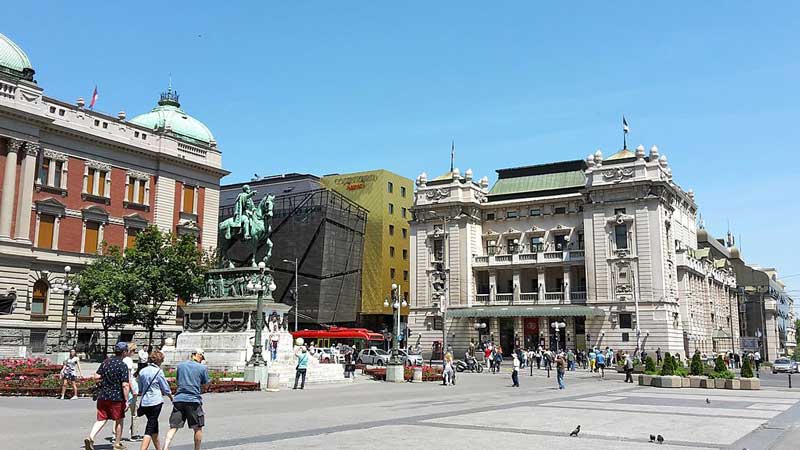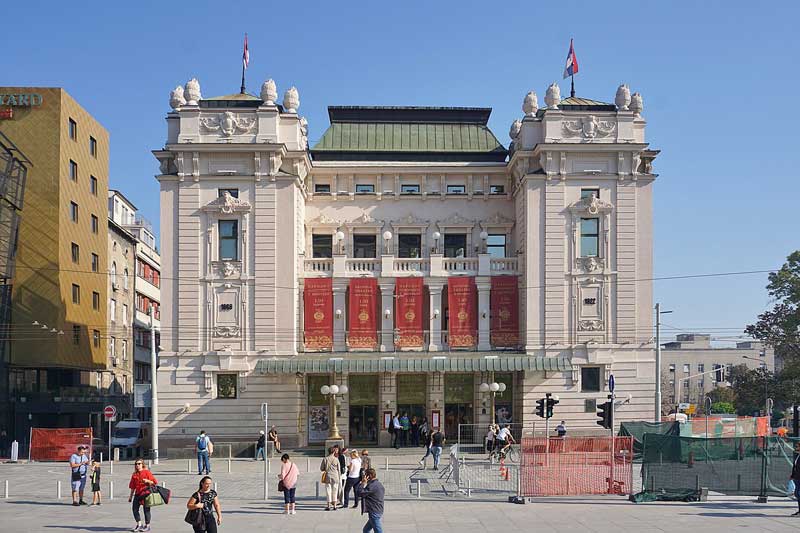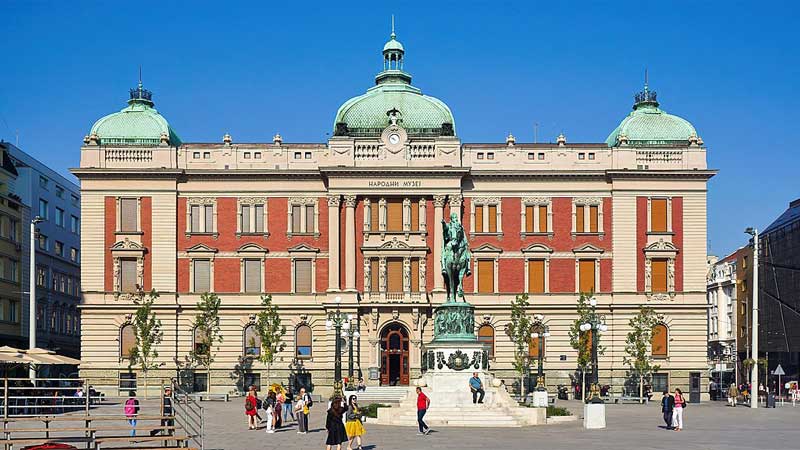
The Republic Square, locally known as Trg Republike, is one of the central town squares of Belgrade, located less than 100 meters away from Terazije, the designated centre of the Capital City. The open square, a popular meeting place for the locals and visitors alike for freely wandering around or relaxing to catch the vibe of central Belgrade with coffee and snacks, is also the site of some of the most important historic public buildings of Belgrade. The buildings include, among others, the National Museum, the National Theatre, the Army House and the equestrian statue of Prince Michael, considered the most enlightened ruler of modern Serbia. The large square is divided into three smaller areas, decorated with four beautiful fountains, among which the most popular two are located in front of the Belgrade Cultural Centre.

During the Habsburg rule from 1717 to 1739, the Austrians conducted a massive project of constructing the German Town, where the large-scale settlement of ethnic Germans was ensued. Apart from that, the project included the construction of several imposing Baroque buildings on the outskirts of German Town, located in the area of the present modern square. However, Austria was forced to demolish all those military and civilian buildings, along with all the fortifications, except the buildings outside the walls of the Belgrade Fort, in terms of the Treaty of Belgrade, signed after Austria lost the Austro-Turkish War of 1737-1739. However, the site of the present square was not laid out for a long time, even after Serbian rule was re-established in all of Belgrade in 1867. It contained the remains of the notorious Stambol Gate, in front of which the Turks executed their non-Muslim subjects, surrounded by marshes and gullies and a row of black locust trees, leading to the open farmer's market, known for the lamb and pork meat. The Stambol Gate was demolished to the ground on 20 March 1866 on the orders of Prince Michael, for the construction of the proposed National Theatre. However, immediately after the demolition of the gate, the military parade of the regular units of the Serbian army was organized on 1 April, from the gate, over Terazije, the central town square, to the Old Konak, in the Royal Compound.

The Republic Square is located less than 100 meters away from Terazije, the designated centre of Belgrade,free to wander around, eat some street food and catch the vibe of the city.While it extends to the Knez Mihailova Street on one side, on the opposite side, the square is occupied by the Staklenac, the first modern glass and steel constructed shopping mall of Belgrade. However, it was not always known as Republic Square. Initially, it was known as Prince's Square in the 19th century, probably named after Prince Mihailo Obrenović III, the most enlightened ruler of modern Serbia, who advocated the idea of a Balkan federation against the Ottoman Empire. But after the Great War and consequent fall of the Kingdom, when the socialist regime proclaimed the Republic, it was renamed Republic Square, in honour of the newly installed political system. Although after the dissolution of Yugoslavia in the 1990s, there have been initiatives for the square to be renamed Theatre Square, after the National Theatre, located in the square, it did not materialise till today.

The National Theatre in Belgrade was built back in 1868 in the Renaissance style, modelled after La Scala in Milan, at the corner of Vasina and Francuska Street in the Republic Square. It was the only large building in the area for more than 30 years, until the erection of the monument to Prince Mihailo on 19 December 1882, when the square gradually started to acquire more buildings. Today, it houses three artistic ensembles: opera, drama and ballet, under its roof and is recognised as a symbol of Serbian culture, tradition and spirituality. Duly protected by the Republic of Serbia, it was declared a Monument of Culture of Great Importance in 1983.

The other major building in the square is the National Museum, which marks the tip of Republic Square, founded in 1840. Before its construction, the site of the museum building was occupied by a tavern named Dardanelles, which was a usual meeting place for the cultural and artistic elite of the society to exchange their views. The demolishing of the old tavern and construction of the new building, in which some sort of reinforced concrete was used for the foundation for the first time in the city of Belgrade, signified the beginning of the transformation of the modern Republic Square. Apart from its impressive permanent and temporary exhibitions, the museum contains more than 400.000 archaeological artefacts, scripts, sculptures, frescos, paintings and other artistic objects. In addition to that, it houses a huge collection of Serbian and Yugoslavian artists, along with the works of several famous foreign artists like Renoir, Canaletto, Rubens, Picasso and Kandinsky.

Just outside of the National Museum stands the Knez Mihailo or Prince Mihailo Monument, designed by Italian sculptor Enrico Pazzi and installed in 1882, symbolising the liberation of Serbia from Turkish occupation at the end of the 19th century. He was one of the key figures in modern Serbian history, who persuaded the Turks to peacefully leave Serbia, effectively gaining the full state of independence, but brutally assassinated in 1868.

Located opposite to the National Museum and originally built for the Yugoslav Bank in 1923, the fabulous building came to be known as the building of the Jugoexport Fashion Company after WWII. At the time of its construction, it was the largest building in Belgrade, with its façade decorated with heads of men and women, and on the top the figures of Atlases holding the Earth. Later, the building was bought by Novi Sad businessman Petar Matijević, after the insolvency and the subsequent bankruptcy of Jugoexport and it was turned into an elegant 4-star hotel, named Centar No.1.
The core of the Republic Square is a pedestrian zone, lying between two great buildings on the west, known as the Palace Riunione and the House of the Press. Constructed in 1931, the name Palace Riunione originated from the title of an Italian insurance company from Trieste and was designed after the company’s headquarters in Madrid. The other building, the House of the Press, constructed in 1961 and facing Republic Square from two sides, is the biggest building on the square and houses the International Press Centre. The first two floors of the building are occupied by the Belgrade Cultural Centre, containing a bar, a movie hall, an art gallery and many more features and amenities.In addition to that, the House of the Pressalso houses the offices of many more companies, organizations and institutions.

Placed on a tall stand and also displaying current weather conditions, the Millennium clock, a modern public clock funded by Delta Holding was installed in the square in 2000. Made of chromed steel and glass, two digital clocks face the less busy sides of the square, while two small, analogue clocks face the two busier sides. Designed and built in the accordance with the surroundings, the clock was described as the nice and modern architectural detail of Belgrade.